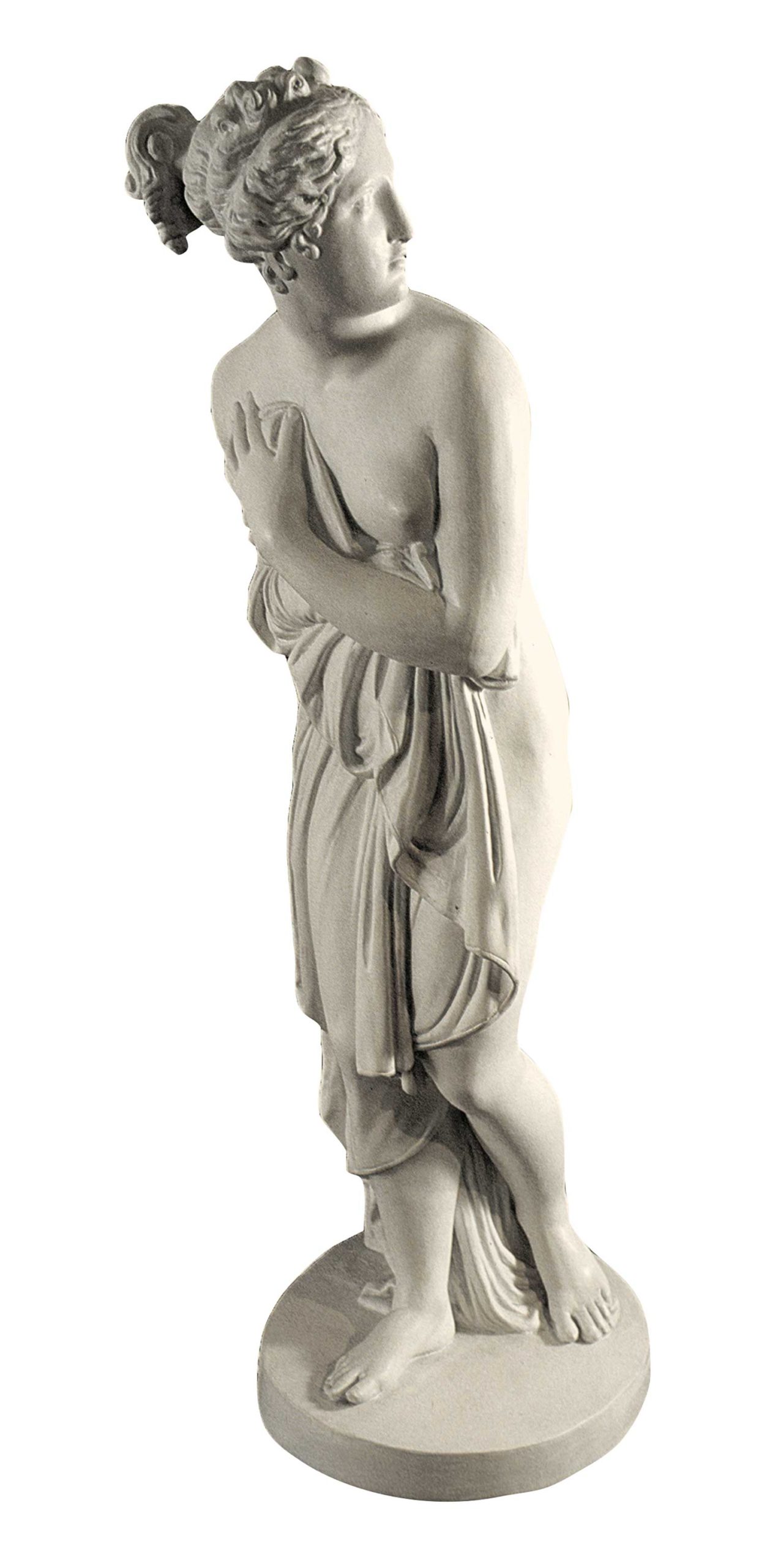Work: Venus at her Bath or Italica
Copy of sculpture

Copy
- Dimensions
- 110 cm high; scale replica
- Technique
- cast
- Material
- alabaster plaster
- Space
- Ancona
Original
- Author
- Antonio Canova
- Date
- 1812
- Period
- Neoclassical
- Dimensions
- 172 cm high
- Material
- marble
- Location
- Pitti Galleries, FlorenceSi apre in una nuova finestra
Foto: Maurizio Bolognini. Proprietà: Archivio Museo Tattile Statale Omero.
Description
“I have read that the ancients, having once produced a sound, used to modulate it, raising and lowering the tone without departing from the rules of harmony. This is what the artist who works on a nude must do”, Antonio Canova.
Antonio Canova carved this Venus in 1812. The commission was for a copy of the famous Medici Venus, but the sculptor reinterpreted the subject very freely. The original statue, approximately 172 cm high, is housed in the Pitti Gallery, while the reduced-scale plaster copy on show at the Museo Omero is approximately 110 cm.
The statue depicts Venus who has just come out of her bath.
The goddess is standing, partially covered by a cloth that falls in folds to the ground. Her left hand holds the fabric over her right breast, her right arm is covered. The back of her body is bare, while the front is partially hidden by the draped fabric. Her right leg is set slightly forward as if she is starting to walk away from the water. She leans slightly forward and her head is turned to her left, showing the viewer her regular profile. Two thin laces tie up her long wavy hair which is then gathered into a ponytail of regular curls. The goddess is depicted in a simple action and appears sensual and graceful yet also vulnerable.
The statue rests on a circular pedestal that seems to invite the viewer to move around the figure. Canova’s sculptures were never meant to be seen from a single direction and the viewer must change his position in order to fully appreciate their forms.
Canova is considered one of the greatest Neoclassical sculptors. His works clearly demonstrate his admiration and study of ancient statuary; contemporary archaeological excavations were bringing many sculptures to light. Canova reclaimed the subjects, perfection and formal harmony of Classicism, without ever falling into sterile imitation.
Photo: Maurizio Bolognini. Museo Tattile Statale Omero Archive.
